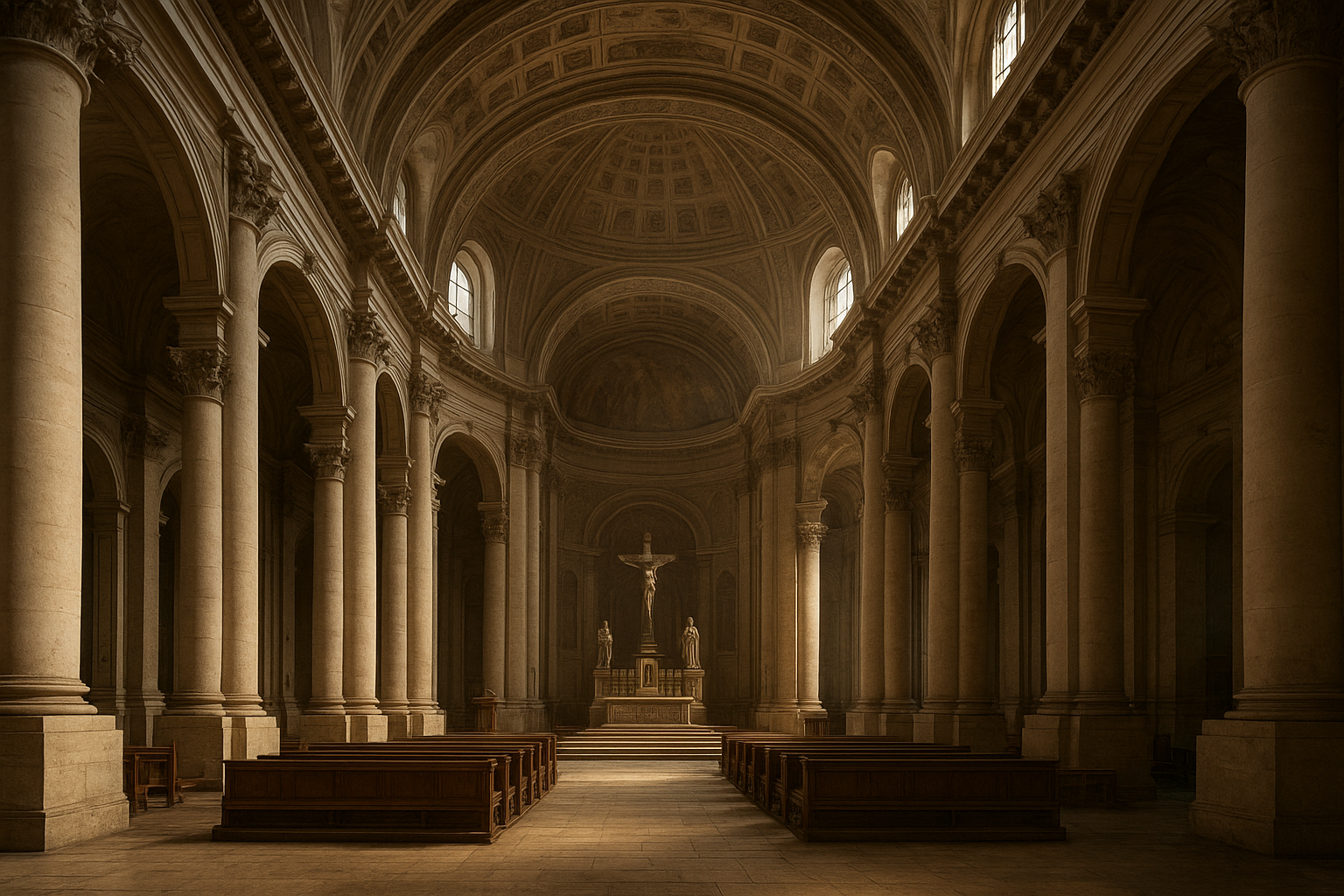The majestic structures of churches and cathedrals have long captivated artists, historians, and travelers alike. Rooted in classical inspiration, these sacred spaces offer a glimpse into the artistry, spirituality, and cultural significance that span centuries. In this article, we delve into their architectural marvels, historical evolution, and enduring influence on art and culture.
Architectural Splendor Rooted in Classical Inspiration
The grandeur of churches and cathedrals often lies in their architectural design, heavily influenced by classical elements derived from Greco-Roman traditions. The use of columns, domes, and arches showcases a synergy of faith and form, creating spaces that inspire awe and reverence.
- Columns: The Corinthian, Doric, and Ionic columns prevalent in ancient Greece find their echoes in the structural designs of many cathedrals. These features create a sense of order and proportion, mirroring the divine harmony sought within these sacred places.
- Domes: Inspired by the Pantheon, domes such as the famous Duomo of Florence and St. Peter’s Basilica in Vatican City symbolize the heavens, drawing the eye upward and creating a spiritual focal point.
- Arches: The Romans perfected the arch, and its use in church architecture is not merely aesthetic but also functional, distributing weight and enabling the construction of vast, open interiors.
“Architecture is the reaching out for the truth.” – Louis Kahn
Historical Evolution of Ecclesiastical Architecture
Church and cathedral architecture have evolved considerably over the centuries, shaped by theological, cultural, and technological changes. Each era has contributed distinctive styles that reflect their contemporaneous societal and religious contexts.
- Romanesque: The early Medieval period embraced the Romanesque style, characterized by thick walls, rounded arches, and sturdy piers. This style provided the solidity necessary for the growing size and complexity of church structures.
- Gothic: Emerging in the 12th century, the Gothic style introduced pointed arches, ribbed vaults, and flying buttresses. These innovations allowed for higher ceilings and larger windows, facilitating the inclusion of intricate stained glass art.
- Baroque: Baroque architecture captured the exuberance and emotion of the Counter-Reformation period, showcasing ornate details, bold forms, and dramatic use of light and shadow.
- Renaissance: The Renaissance brought a revival of classical architectural principles, infusing churches with symmetrical forms, balanced proportions, and grandiose façades.
The transition between these styles illustrates not only a shift in architectural techniques but also in the broader expressions of faith and the church’s role in society.
The Influence of Churches and Cathedrals on Art and Culture
The influence of ecclesiastical architecture extends far beyond the confines of brick and mortar. Churches and cathedrals have long served as both muses and canvases for artists, contributing profoundly to the world of art and culture.
- Stained Glass: Often dubbed the “poor man’s Bible,” the vibrant stained glass windows found in cathedrals like the Chartres and Notre-Dame de Paris tell biblical stories through masterful artistry.
- Sculpture: The façades of many cathedrals are adorned with detailed sculptures depicting religious figures and motifs, a testament to the skill of medieval artisans.
- Music: Churches have been central to the development of Western music; from Gregorian chants to complex polyphonies, sacred music has been composed and performed within these acoustically resonant spaces.
Furthermore, the cultural significance of these structures is manifested in their role as community gathering places, pilgrimage destinations, and historical landmarks.
Modern Echoes of Classical Inspiration
Today, the echoes of classical inspiration in church architecture continue to resonate, influencing modern designs that blend tradition with innovation. Contemporary architects often seek to capture the spiritual essence inherent in classical forms while incorporating new technologies and materials.
Modern churches like the Cathedral of Christ the Light in Oakland, California, utilize advanced engineering techniques and sustainable materials while honoring the classical elements of light and space that define ecclesiastical architecture.
Some architects even reinterpret classical motifs to create inclusive and accessible sacred spaces for modern congregations, reflecting the evolving social and religious landscapes.
“Architecture should speak of its time and place, but yearn for timelessness.” – Frank Gehry
Conclusion: The Timeless Allure of Sacred Spaces
Churches and cathedrals remain potent symbols of humanity’s quest for transcendence and beauty, their designs perpetually inspiring awe and reflection. As we stand within these holy grounds, we are reminded of the enduring legacy of classical inspiration and the boundless creativity it continues to evoke in human hearts and minds.
To explore more about the classical influences on architecture and design, consider visiting The Royal Institute of British Architects or ArchDaily.
